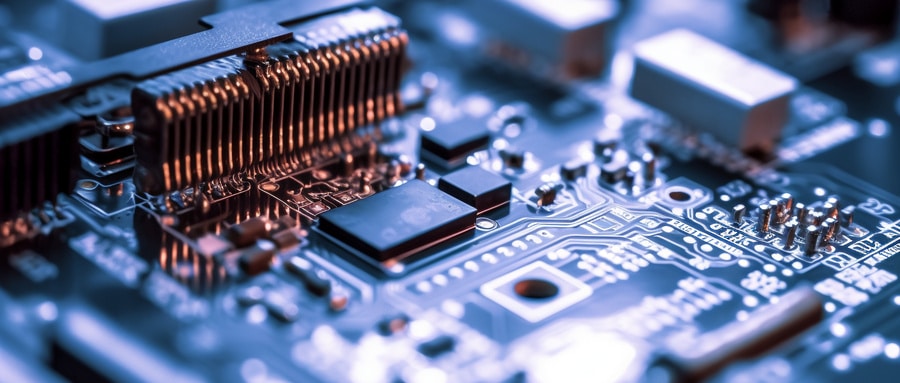A Detailed Study of Arcade PCBs in Today’s Digital Age
1. PCB Foundations – History and Basic Understanding
PCBs (Printed Circuit Boards) form the core of all your favorite arcade games, from Space Invaders to Street Fighter V. Holding the programming code, graphics files, audio files and other assets necessary for controlling its mechanics, PCBs are at the heart of these incredible video game experiences.
2. Revamp of Arcade PCBs
Arcade gaming has undergone rapid transformation over the last several decades. At first, each game required its own PCB; over time multi-game PCBs emerged before major innovations like JAMMA standardized systems emerged to meet growing needs – along with current multi-cade PCB developments.
3. Revealing Innovations: The Rise of JAMMA Standard
JAMMA (Japanese Amusement Machine and Marketing Association) first implemented its standardized board configuration system during the mid-1980s, enabling one cabinet to host different games simply by swapping out its PCB, streamlining operations for arcade owners.
4. Redefining Entertainment: Emergence of Multi-cade PCBs
Building upon JAMMA’s success, multi-cade PCBs began appearing, supporting multiple games on one board and giving gamers greater power than ever to select their game of choice without being limited by just one machine per machine. This innovative technology gave gamers greater choice of gaming machines than ever before!
5. Predicting Future Arcade PCB Trends
PCB technology continues to advance along with technological innovations in gaming. FPGA (Field Programmable Gate Array) technology promises the perfect balance of custom hardware implementation with software versatility; therefore foreshadowing an exciting era of arcade PCBs.
6. Selecting Your Perfect Gaming Companion: Guide for Selecting an Arcade PCB in 2024
As gaming continues to expand, having access to an in-depth guide of the best multi-cade PCBs available in 2024 becomes ever more essential. Covering factors like game variety, ease of programming and cost effectiveness; this section can assist you in making an informed decision.
7. Guide for Arcade PCB Maintenance and Troubleshooting
Game enthusiasts understand the significance of arcade PCB longevity and performance as essential factors in their enjoyment of video gaming. Gaining knowledge on maintenance practices, preventative measures and troubleshooting tips can extend their lifespan – something many game manufacturers prioritize in creating reliable products for gamers.
PCBs represent an intriguing facet of gaming industry’s development. As technology progresses, the dynamic interaction between arcade gaming and PCBs fuels an ever-evolving arcade gaming experience, and by understanding their subtle nuances we can truly appreciate their grandeur in enhancing gaming experiences.

As we move forward into the future, arcade PCBs will remain at the core of gaming industry innovation, shaping its direction and milestones, as they carry forward their legacy that has transformed and shaped entertainment landscape over the decades.
Arcade PCB FAQ:
- What is an Arcade Printed Circuit Board?
An Arcade Printed Circuit Board, or Printed Circuit Board, is the main board that contains the hardware and game code for an arcade game. They are typically used in arcade cabinets and are responsible for running the specific game that’s installed on them. - How do Arcade Printed Circuit Boards work?
Arcade Printed Circuit Boards are self-contained units. They carry the processor, RAM, ROM, and all other necessary components to run the game. The game code is stored on ROM chips. When you insert a coin and press start, the PCB runs the game code, creating the images and sounds you see and hear while playing. - How are Arcade Printed Circuit Boards connected in the machine?
Arcade Printed Circuit Boards connect to the rest of the arcade cabinet via the JAMMA (Japan Amusement Machine and Marketing Association) harness, a standardized connection system used in many arcade machines. This carries both power and signals for controls, video, and audio. - Can I replace the PCB in my arcade machine with another one?
Yes, but there can be compatibility issues. Before swapping PCBs, make sure both PCBs are compatible with your machine and both use the same interface, typically JAMMA. - What is a Multi-Arcade PCB?
A Multi-Arcade PCB, as its name suggests, holds multiple games on a single board. This allows arcade owners to offer multiple games without the need for multiple cabinets or swap out PCBs frequently. - Can Arcade PCBs be repaired?
Yes, many common issues such as dry solder joints, damaged components, and battery leakage can often be repaired by technicians or enthusiasts with soldering skills and experience in electronics. - Are there any legal issues regarding Arcade PCBs?
Arcade PCBs and the games they run are subject to copyright laws. Unlicensed reproduction or distribution of these PCBs or games is illegal. For gaming at home, users are advised to purchase legitimate, licensed copies of arcade games to ensure they act within the law. - How do I determine the value of an Arcade PCB?
The value of an arcade PCB can be determined by factors such as its rarity, the popularity of the game it carries, its condition, and whether it’s working or not. To find current prices, one can check arcade gaming forums, online marketplaces, and auctions. - What is a JAMMA PCB?
A JAMMA PCB is an arcade PCB that conforms to the JAMMA standard. This means it would be possible to plug the PCB into any JAMMA standard machine and the game would work correctly, without needing special wiring. - Can Arcade PCBs be used with home consoles?
There are special adapters known as “super guns” that allow you to connect an arcade PCB to a television and use home console controllers. However, casual gamers may want to consider modern systems that reproduce classic arcade games more easily and affordably.























